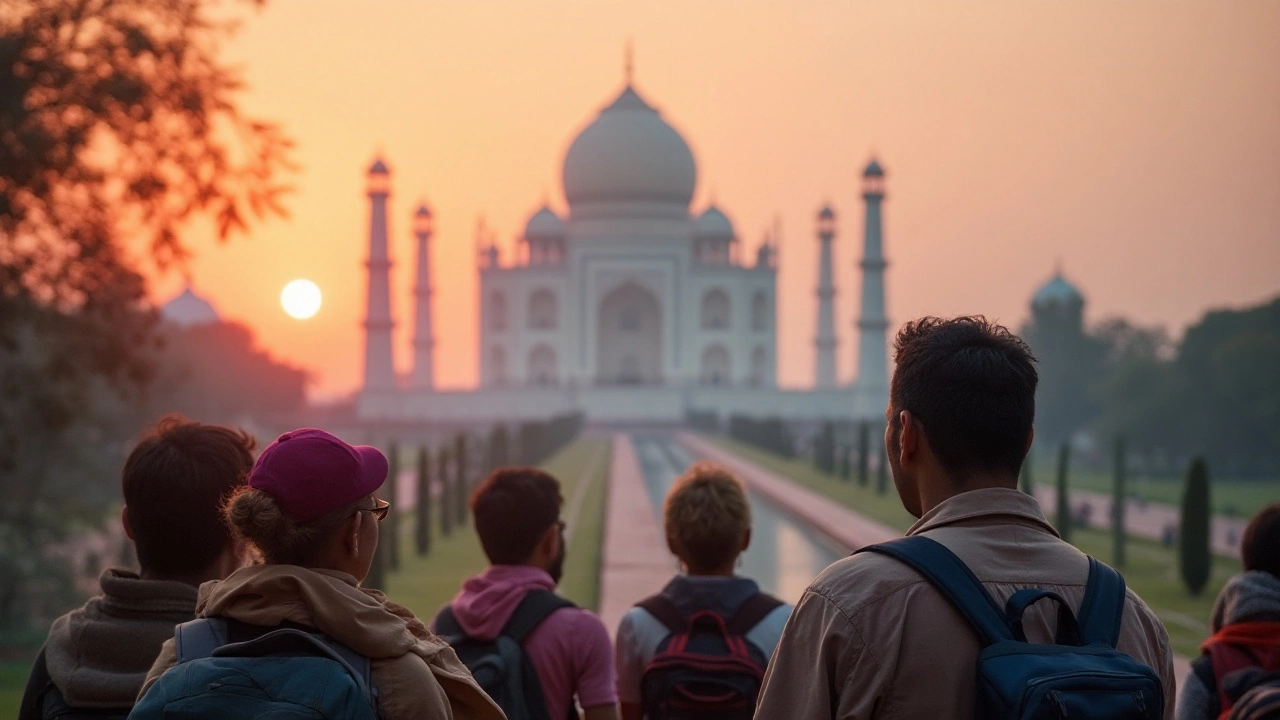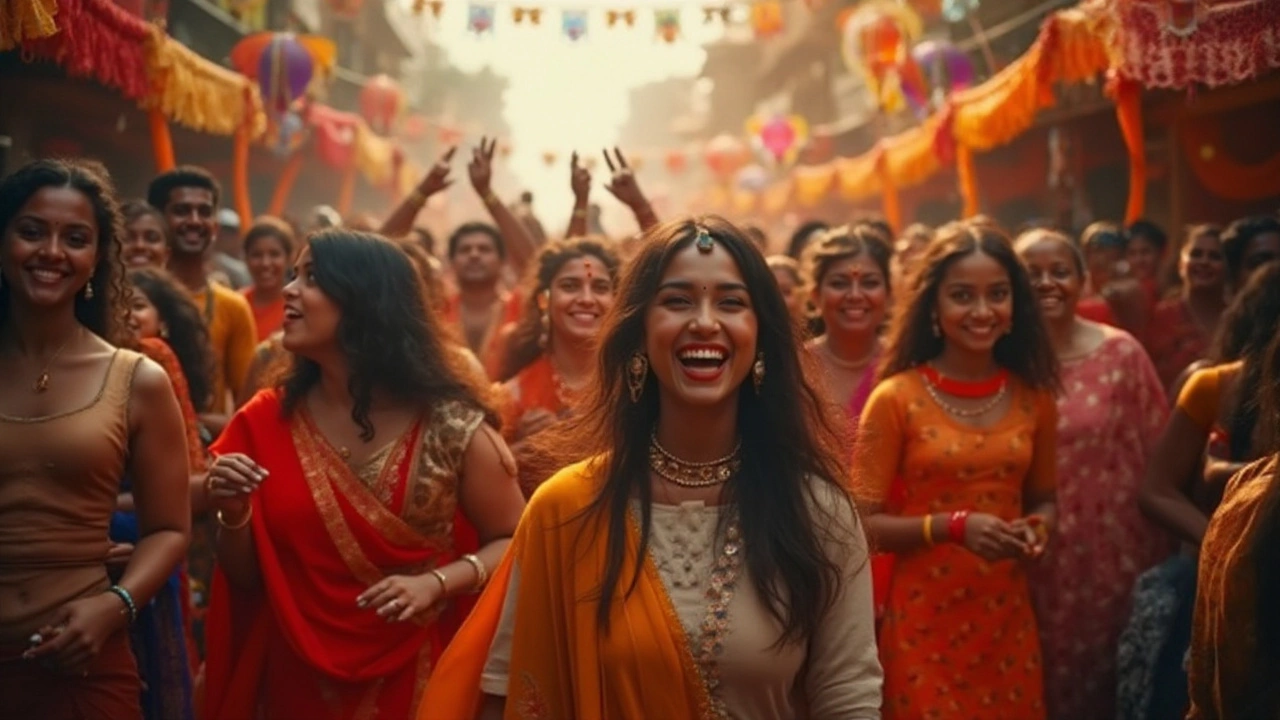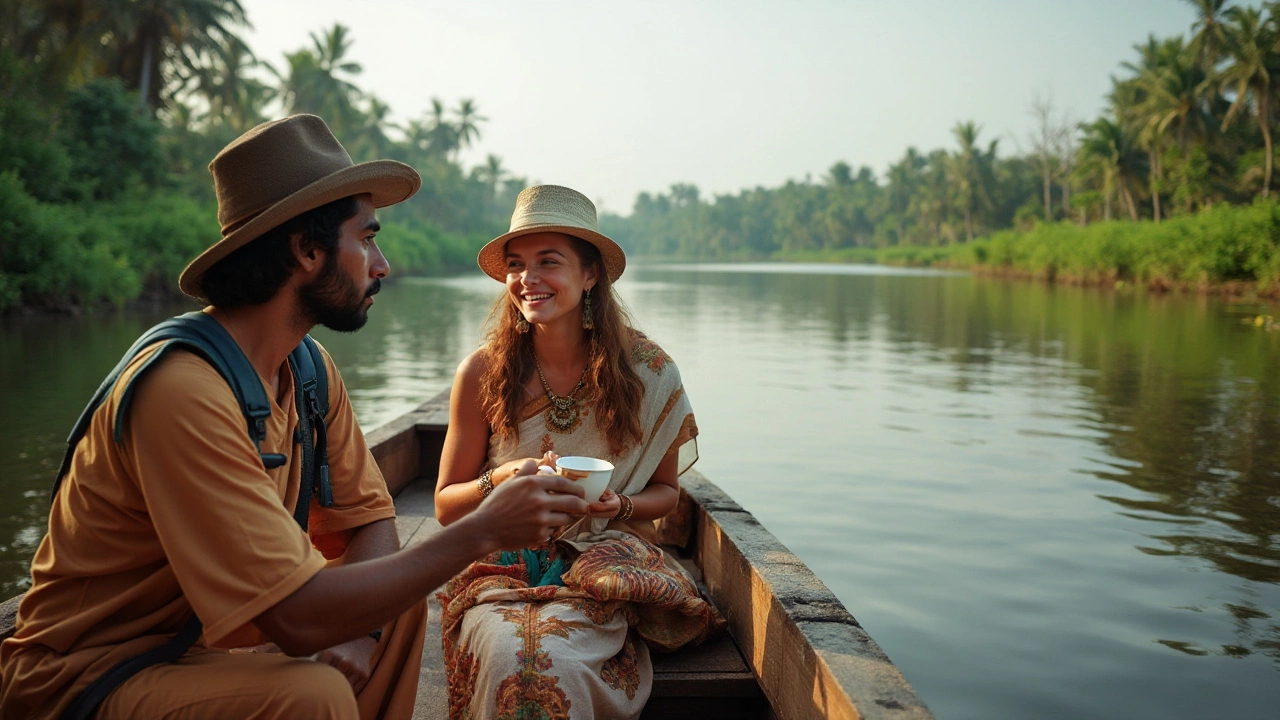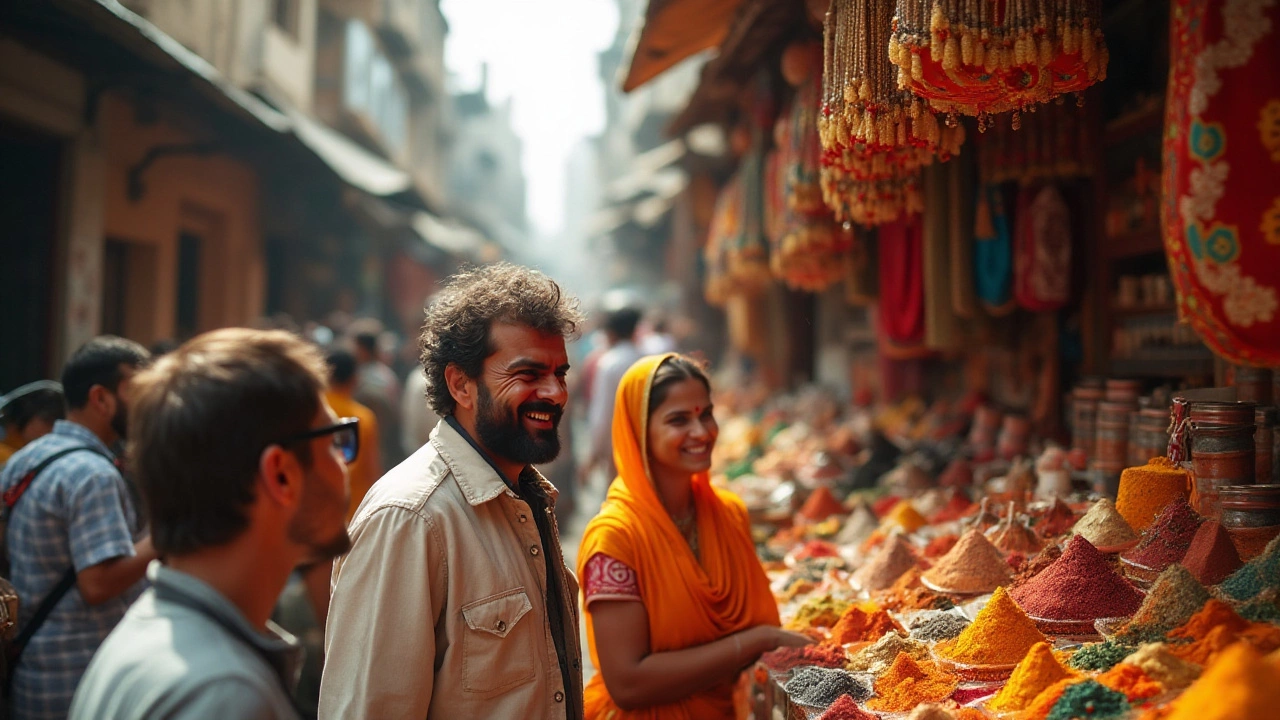India stands as a beacon of cultural richness and diversity, drawing intrepid travelers from all corners of the globe. Each year, millions set foot on its vibrant soil. With ancient temples, bustling markets, serene backwaters, and architectural marvels, it's no wonder India stands as a must-visit destination on many travelers' lists. But who visits this nation more than anyone else?
Exploring the statistics reveals interesting patterns, and the answer might surprise you. Beyond the numbers, understanding the motivations and attractions that lead these visitors to India enriches our perspective of global travel dynamics. Whether they're mesmerized by the spiritual bounty, fascinated by the historical tapestry, or enchanted by the scenic beauty, each visitor brings with them a unique reason.
In this article, we'll delve into the allure that India holds, share insights into the nationality that visits most often, and offer practical tips for those planning their own journey here. So, if you're curious about what makes India a top choice for travelers around the world, read on. You might just find yourself inspired to plan your own adventure through this endlessly enchanting country.
- India's Appeal to Global Tourists
- The Top Visiting Nationality
- Cultural Attractions Drawing Tourists
- Travel Tips for Enjoying India
India's Appeal to Global Tourists
India's allure as a travel destination is nothing short of mesmerizing, presenting a kaleidoscope of cultures, landscapes, and experiences that captivate the hearts of global tourists. With its vibrant tapestry of history and modernity, India attracts visitors keen on exploring the cultural travel it offers. It is a land where ancient traditions harmoniously coexist with cutting-edge technology hubs, providing a stark contrast that intrigues the discerning traveler. The nation offers an array of adventures, from the snow-capped peaks of the Himalayas to the sun-drenched beaches of Goa, each promising a unique slice of paradise for those seeking natural beauty. Whether it's the bustling cities teeming with life and colors or the tranquil countryside dotted with centuries-old temples and shrines, India never ceases to surprise its visitors.
The cultural tour isn't limited to landmarks and landscapes, though. The food, festivals, and people play just as pivotal a role in India's appeal. The myriad flavors of Indian cuisine—spicy, sweet, tangy, and everything in between—offer a culinary journey that's as rich and varied as the country itself. Renowned festivals like Diwali, Holi, and Durga Puja bring the streets alive with color and cheer, offering tourists firsthand experiences of India's celebratory spirit. To walk through an Indian market during these festivals is to immerse oneself in a sensory delight of sounds, smells, and sights unlike any other.
Rich Historical Tapestry
For those with a penchant for history, India is an open-air museum. From architectural wonders like the Taj Mahal and the ancient city of Varanasi to the intricately carved temples of Khajuraho, each site holds stories that span thousands of years. The monuments are not just stone and mortar; they are silent witnesses to the civilizations and empires that have left an indelible mark on humanity.
"India has two million gods, and worships them all. In religion all other countries are paupers; India is the only millionaire," noted author Mark Twain keenly observed. This acknowledgment speaks to the profound depth and diversity of spiritual life found here, drawing pilgrims and seekers of truth from all over the world.The architectural styles vary from one state to another, showcasing a range of influences including Mughal, British colonial, Portuguese, and many more, illustrating the country's eclectic past.
Economic and Leisure Travel
The rise of India as a global economic power has also bolstered its status as a top tourist destination. Conferences, exhibitions, and conventions attract business travelers who often extend their stays to explore the Indian attractions. The hospitality industry has risen to the occasion, offering world-class services that cater to both business and leisure tourists. From luxurious heritage hotels to cost-effective accommodations, India's lodging options are as varied as its visitors. This range ensures travelers find comfort during their stay, no matter their budget or taste.| Country | Annual Visitors to India | Percentage of Total Tourists |
|---|---|---|
| USA | 1.2 million | 15% |
| UK | 990,000 | 12% |
| Germany | 600,000 | 7% |
All these factors collectively create an undeniable draw to this vibrant country. It's the vivid blend of ancient and modern, spirituality and celebration, tranquility and chaos, that make India a compelling magnet for adventurers and peace-seekers alike. As travelers leave with colorful memories etched in their minds, the resonance of 'Incredible India' lingers long after their departure, ensuring they carry a piece of the subcontinent's enduring allure wherever they go.

The Top Visiting Nationality
India's cultural legacy and diverse landscapes beckon travelers from various parts of the world, yet there is a particular nationality that tops the charts year after year. Historically, travelers from the United States hold the distinction of being the largest group to visit India, captivated by its mystery and charm. Americans are inspired by both modern India and its ancient traditions, drawn to explore a myriad of attractions from the bustling streets of Mumbai to the serene banks of the Ganges.
The influx of American tourists can be attributed to a variety of reasons, including strengthened travel relations and the increasing interest in wellness tourism. India is home to more than just impressive temples and palaces; it is a sanctuary for yoga enthusiasts and spiritual seekers worldwide. From the Himalayan foothills down to Kerala's tropical coastlines, countless wellness retreats offer authentic yoga practices. Americans, in particular, are interested in the holistic experience that India delivers.
In recent years, decreasing travel restrictions and affordable travel packages have made India an even more viable option for American tourists. The sharing of authentic experiences on social media platforms has also sparked curiosity, transforming perception patterns. A 2023 survey shows that 25% of American travelers view India as a 'bucket-list' destination, with historical interest and cultural exposure being their major motivators.
The Draw of Cultural Attractions
Among the cultural attractions, the Taj Mahal stands prominently as an iconic symbol of India’s rich heritage. This UNESCO World Heritage site, crafted in white marble, consistently draws praise for its breathtaking beauty and historical significance. A significant percentage of American tourists prioritize this visit in their itineraries, eager to see firsthand what many only dream of.
According to a travel piece by The New York Times, "The allure of the Taj Mahal lies in its perfect symmetry and expansive gardens, captivating every visitor in its timeless beauty."
In addition to this architectural wonder, Americans frequently explore Rajasthan’s lavish palaces, the holy ghats of Varanasi, and the spiritual air of Rishikesh. These sites collectively offer a diverse cultural experience, promising memories worthy of every long journey made.
Understanding American Preferences
An understanding of American tourists’ preferences reveals a deeper appreciation for authenticity. They usually engage in immersive experiences, such as learning traditional Indian crafts or culinary skills. It is not uncommon to see these visitors trying their hand at Indian cooking classes or embarking on textile tours that highlight India's famed block printing techniques. Through these activities, American travelers connect more profoundly with the local cultures.
As India continues to attract more visitors from the United States, the impact on the tourism industry is significant. Local economies capitalize on this interest, and it lends itself to meaningful exchanges between peoples. For a nation as vast as India, welcoming international travelers is both a cultural exchange and a showcase of its deeply-rooted heritage. The presence of diverse tourists enriches both the visitor experience and the global reputation of India's tourism sector.

Cultural Attractions Drawing Tourists
India's rich tapestry of culture is a magnet that pulls travelers from every corner of the earth. The country's unique blend of history, religion, art, and tradition offers an array of experiences that leave visitors enchanted and yearning for more. From the north’s snow-capped mountains to the south’s artistic shores, each region in India has a distinct flavor, and it is this diversity that many tourists seek to explore. The iconic Taj Mahal in Agra, a UNESCO World Heritage Site, leads the list of must-see attractions. The allure of this white-marble mausoleum, built by Mughal Emperor Shah Jahan in memory of his wife Mumtaz Mahal, is unparalleled. Tourists are often left speechless by its grandeur and the poignant love story it symbolizes.
In addition to historical wonders, spiritual tourism holds a significant place in attracting visitors. Varanasi, known as one of the world's oldest continuously inhabited cities, is a spiritual haven. Here, along the banks of the Ganges River, travelers can witness the astonishing Ganga Aarti ceremonies—a mesmerizing blend of fire, music, and prayers. These immersive experiences often stay with visitors long after they leave India’s sacred grounds. According to statistics, over 10 million international tourists visit India annually, with a substantial number drawn specifically to experience spiritual rituals and sacred sites.
"India's spiritual landscape offers profound experiences that touch the soul," said a well-known travel journalist from Lonely Planet.
Art and festivals present another layer of attraction that captivates visitors. The vibrant and colorful festivals like Diwali, Holi, and Navratri are celebrated with immense fervor and joy. These festivals provide travelers a glimpse into the awe-inspiring unity of Indian society amid its diversity. The Pushkar Camel Fair and Kerala’s Boat Races present opportunities for tourists to dive into local traditions and enjoy unforgettable spectacles. Indian cuisine, a cultural attraction in its own right, draws food lovers from all over the world. From the rich, buttery dishes of Punjab to the spicy seafood curries of the coastal regions, the spectrum of flavors is as vast as the country itself.
Monuments that narrate the stories of Indian dynasties also entice curious travelers. From the ornate palaces and forts of Rajasthan, such as the Amber Fort and Udaipur City Palace, to the ancient city ruins of Hampi, the architectural brilliance of India is both a feast for the eyes and a gateway into the past. Given the blending of various architectural styles across the ages, these sites serve as perfect canvases for understanding the cross-cultural influences that have shaped India's history. With these cultural offerings, combined with the natural beauty from the Himalayas to Kerala’s backwaters, it’s no wonder that travelers return time and again.

Travel Tips for Enjoying India
Traveling to India for the first time can be both thrilling and overwhelming. To make the most out of your trip and truly absorb the cultural wonders India has to offer, there are a few essential tips to keep in mind. Plan your itinerary with a mix of popular tourist attractions and off-the-beaten-path locales to experience a variety of India's landscapes and lifestyles. Cities like Delhi, Mumbai, and Jaipur are renowned stops, each offering a unique perspective on Indian culture, history, and modernity. Meanwhile, the tranquil backwaters of Kerala or the mountainous serenity of Himachal Pradesh can offer a peaceful retreat from the bustling city life. These travel destinations are significant and manifest the vast diversity that India tourism has in store for travelers.
One key aspect to keep in mind while exploring is the climate. India is a vast country with diverse weather conditions that vary significantly from one region to another. Timing your visit is crucial. The winter months from November to February are often the preferred time to visit, as temperatures remain pleasant in most regions. Packing a mix of light, breathable clothing along with a jacket or sweater for cooler evenings is advisable. Consider the monsoon season which runs from June to September, as heavy rains can disrupt travel plans, but they also bring out a lush beauty that’s worth experiencing in itself.
Navigating the culinary landscape of India is an adventure of its own. Indian cuisine is as varied as its culture, so take the opportunity to try regional specialty dishes. Street food is an integral part of the experience, but exercise caution by opting for freshly cooked items from vendors with a high turnover rate. Some travelers find it necessary to carry medications for common issues like upset stomachs, just in case. Respect the local etiquettes at dining spots—using the right hand for eating is customary, and leaving a small tip is generally appreciated.
Connecting with locals and understanding local customs not only enrich your travel experience but also helps avoid misunderstandings. English is widely spoken, especially in urban areas, but learning a few basic phrases in Hindi or another regional language can make a positive impression and break barriers. Participating in local festivals or events can deepen your insights into the culture. Events like Diwali or Holi are not just celebrations; they are an immersion into the heart of Indian tradition. "Embrace the chaos and leave your perceptions behind," suggests travel writer Ruth Prawer Jhabvala, capturing the spirit of open-mindedness needed to truly enjoy India.
Travel safety is imperative, so take usual precautions you would while traveling anywhere. Keep your belongings secure, avoid isolated areas at night, and trust your instincts. Arranging transportation through hotels or reputed services is recommended. Familiarizing yourself with the emergency contact numbers in India can be helpful in unforeseen situations. Remember, a vigilant traveler is a safe traveler.
For those on an extended stay, volunteering or short courses in arts like yoga, cooking, or traditional crafts can offer deeper connections to the heart of India's cultural network. Engaging with the local community in meaningful ways allows for exchanges that are vastly rewarding. Utilize online platforms and resources to find reliable programs, ensuring an enriching experience. Being a respectful and informed visitor leaves a positive impact, fostering goodwill and creating lasting memories.
